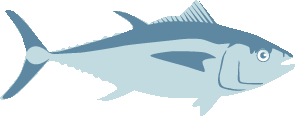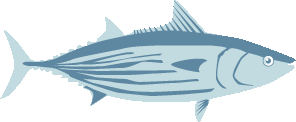Overview
What is a Completed FIP?
Completed FIPs are those that have independent verification that they have achieved their environmental objectives and/or graduated to MSC full assessment or other program assessment. Completed FIPs no longer report on their environmental performance but may choose to voluntarily report on their social performance.
Date of Completion: May 2024
Explanation of Completion: Entered MSC assessment via a scope extension last year, in order to add the FAD and bigeye portion of the fishery to the original certification. Since then, they have also initiated the reassessment process for the whole fishery (as of March 2024).
The FIP is the Dongwon Industries Pacific Ocean tuna purse seine (FAD-associated sets) fishery targeting skipjack (Katsuwonus pelamis), bigeye (Thunnus obesus) and yellowfin (T. albacares) tunas. The fishing vessels are flagged to the Republic of Korea, Kiribati and Tuvalu and operate in the western and central Pacific Ocean (WCPO) high seas and the following Exclusive Economic Zones (EEZs): PNA countries (Federated States of Micronesia, Palau, Marshall Islands, Kiribati, Nauru, Papua New Guinea, Solomon Islands, Tuvalu and Tokelau as a party to the Palau Arrangement) and the Cook Islands. The fishery is managed regionally by the Western and Central Pacific Fisheries Commission (WCPFC).
The FIP considers the following Units of Assessment (9 in total):
- Western and Central Pacific Ocean (WCPO) stocks of skipjack, bigeye and yellowfin, caught by purse seine on FAD associated sets and managed by national management of PNA countries and regionally by WCPFC (three UoAs).
- Western and Central Pacific Ocean (WCPO) stocks of skipjack, bigeye and yellowfin, caught by purse seine on FAD associated sets and managed by Cook Islands national management and regionally by WCPFC (three UoAs).
- Western and Central Pacific Ocean (WCPO) stocks of skipjack, bigeye and yellowfin, caught by purse seine on FAD associated sets on the high seas managed by national management of the Republic of Korea and regionally by WCPFC (three UoAs).
The FIP is the Dongwon Industries Pacific Ocean tuna purse seine (FAD-associated sets) fishery targeting skipjack (Katsuwonus pelamis), bigeye (Thunnus obesus) and yellowfin (T. albacares) tunas.
- Achieve sustainable stock status for all target tunas that is consistent with the Maximum Sustainable Yield (MSY) and management systems strengthened to achieve this.
- Strengthen ETP and FAD management and information in the fishery.
- Achieve MSC certification and the objectives above by 2025.
FIP at a Glance
| 7% | 36% | 57% |
This pie chart represents completed environmental actions. Non-completed environmental actions may contain completed sub-tasks that are not illustrated here. For more information on environmental action progress visit the Actions Progress tab.
- Complete
- Incomplete



